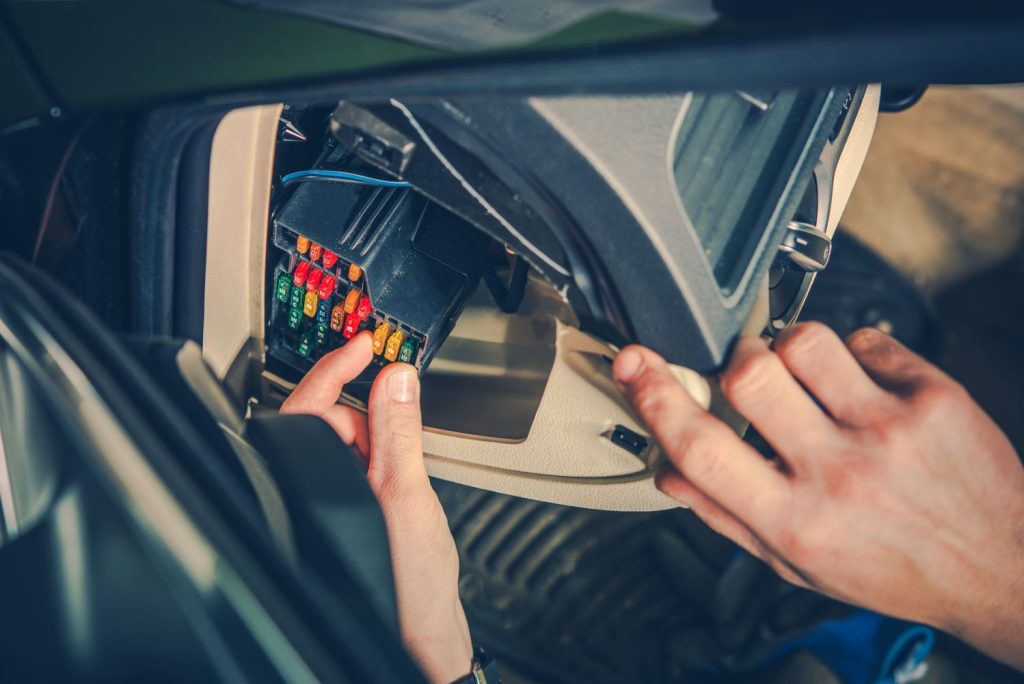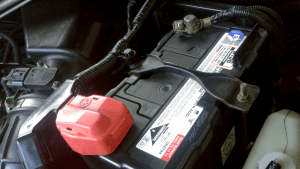Ever had your radio suddenly die, your power windows refuse to budge, or your headlights act up for no reason? Chances are, you’ve got a blown fuse. The good news? It’s an easy fix, and you don’t need to be an auto expert to do it. Here’s a simple step-by-step guide to replacing a car fuse—no stress, no fuss.
Step 1: Take a Deep Breath and Find the Fuse Box
First things first, let’s find the little troublemaker. Your car has one or two fuse boxes, usually under the dashboard or in the engine bay. If you’re not sure where yours is, check the owner’s manual (or just Google your car’s make and model). Once you locate it, pop the cover open and you’ll see a bunch of tiny fuses lined up like soldiers.
Now, let’s talk about why your fuse blew in the first place. Fuses don’t just randomly decide to give up. They blow because there’s too much current running through the system, which means something’s overloading that circuit. This could be from a faulty accessory, a short circuit, or maybe you just plugged in one too many gadgets at once. Understanding the cause can help prevent future blowouts.
Step 2: Spot the Culprit
Time to play detective. Most fuse boxes have a handy diagram on the cover showing what each fuse controls. If your radio’s dead, look for the fuse labeled “AUDIO” (or something similar). If your headlights won’t turn on, check the fuse marked for lights. If you’re dealing with power windows that suddenly refuse to budge, there’s probably a dedicated fuse for that too.
A common mistake? Guessing which fuse to pull. If you’re not sure, refer to the diagram instead of just yanking out random fuses. Pulling out the wrong one won’t necessarily damage anything, but it might disable something that was working just fine.

Step 3: Remove and Inspect the Fuse
No fancy tools needed here. Just grab a fuse puller (which might already be in the fuse box) or use a pair of needle-nose pliers. Gently pull the fuse out and hold it up to the light. A blown fuse will have a broken metal strip inside, while a working fuse will have an intact metal strip.
If you don’t want to rely on your eyesight alone, you can test it with a multimeter. Set it to measure resistance (ohms) and place the probes on both ends of the fuse. If you get a reading, the fuse is fine; if not, it’s blown. Simple as that!
Step 4: Swap It for a Fresh One
Time to grab a new fuse with the same amp rating (you’ll see a little number printed on it, like 10A, 15A, or 30A). Do NOT use a higher or lower amp fuse, or you might fry your car’s wiring. Trust me, you don’t want that. Using the wrong fuse is like trying to fix a leaky pipe by wrapping it in duct tape… It might seem fine for a second, but disaster is just around the corner. Push the new fuse into the slot, make sure it’s snug, and boom, you’re nearly done.
Step 5: Moment of Truth—Test It!
Now, turn your car on and check if everything’s back to normal. If your radio starts playing again, victory dance time! If the fuse blows immediately, there’s probably a deeper electrical issue at play. That means it’s time to call in the pros (aka Autospark, hint hint).
Bonus Tips to Keep Your Fuses Happy
- Keep spare fuses in your glove box – you’ll thank yourself later.
- Never jam in the wrong fuse rating – your car’s not a science experiment.
- Check for loose wires – if fuses keep blowing, there might be a sneaky electrical gremlin messing with your system.
- Avoid overloading your car’s circuits – charging your phone, running the heater, and blasting music at max volume all at once? Maybe rethink that.
- Inspect your battery and alternator – sometimes a weak battery or faulty alternator can mess with the electrical system and cause fuses to blow more frequently.
When to Call in the Experts
If you keep swapping fuses and they keep blowing like popcorn in the microwave, it’s not just bad luck – something’s off. It could be a short circuit, a dodgy relay, or a deeper electrical issue. That’s where Autospark comes in. We’ll figure out what’s really going on and fix it properly. No guesswork, no stress.
Before I Let You Go
Replacing a car fuse is one of the simplest maintenance tasks you can do yourself, saving you time and money. With a little patience and a basic understanding of your car’s fuse system, you can troubleshoot minor electrical issues in minutes. However, if the problem persists, Autospark’s expert technicians are always here to help. Book a service today and keep your car’s electrical system running smoothly.
So next time your car throws a little electrical tantrum, don’t freak out. Just follow these steps, swap the fuse, and get back on the road. And if things go sideways? You know where to find us.







